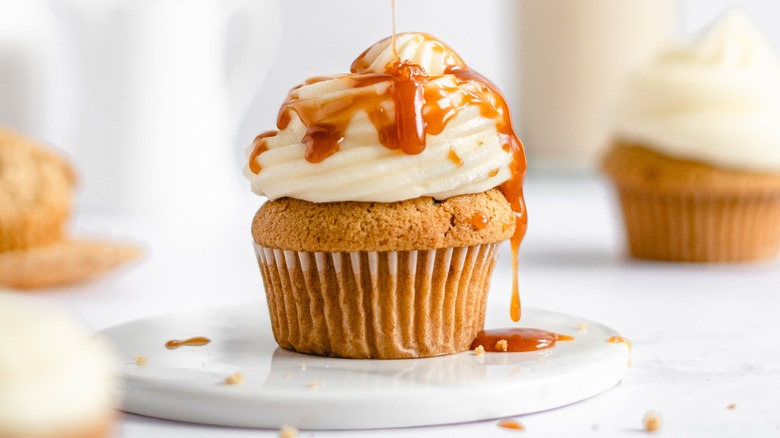Easily Soften Butter By Breaking Out Your Rolling Pin
Softened butter is the key to creating light and airy buttercream frosting and baked goods, such as cakes with open crumb structures and the perfect chocolate chip cookies that aren't overly dense or flat. Softened butter is often used in cake batter and cookie dough recipes and is mixed at a moderate to high speed with sugar in a process called creaming.
In the creaming process, the sugar crystals poke tiny holes in the butter, creating air bubbles that can trap gasses released by leaving agents (such as baking soda and baking powder) during the baking process in the heat of the oven. Using butter softened to room temperature (at 65 to 70 degrees Fahrenheit) is crucial in this step. The butter needs to be pliable enough to whip with the sugar and form a creamy, aerated texture but cool enough that it doesn't melt or become greasy, as warm butter won't hold air.
While using softened butter in baking can be a make-or-break step, sometimes you just don't have the time or foresight to place butter on the counter for 30 minutes to an hour before using it (the traditional method of softening butter). Luckily, using a rolling pin is a quick, mess-free solution to softening cold butter.
How to roll butter out
Using a rolling pin to squash and flatten chilly butter increases the surface area of the fat so it can come to room temperature quicker. And it can be done cleanly, as opposed to more finicky butter-softening methods, such as using a warm water bath, utilizing a double boiler, or microwaving the butter, which require dirtying extra dishes and can lead to melted or overly softened butter.
To roll out butter with a rolling pin, remove the butter from the refrigerator and place it in a sealed plastic bag, or cover the surface of the butter with plastic wrap or a sheet of parchment paper. Then applying force, pound the rolling pin into the edge of the butter and roll it out. Give the stick of butter three to four roll-outs, just enough to flatten it. Look for a flattened disk that is cool to the touch but pliable; the rolling process is similar to that used to prepare butter for making pastry dough.
Leave the rolled-out butter on the counter for a few minutes, then check that the butter has come to room temperature by pressing your finger into it. If it leaves an indent and is cool to the touch (not greasy or melted), the butter is softened and ready to toss into the mixer.
Working with softened butter
Though it may be tempting to skip the softening step, attempting to cream cold butter and sugar simply won't work, as the butter will be too firm to incorporate the sugar and create those sought-after air bubbles.
Alternatively, using butter that's too warm or greasy also won't hold air well and will result in flat, dense, and gummy bakes. For this reason, be careful to avoid overworking the butter when using the rolling pin method.
Once you've skillfully rolled out the butter, you'll have a fast-tracked softened fat to work with to create fluffy sweet treats and velvety buttercream frosting. To cream softened butter, add it to a stand mixer or bowl with sugar. Mix the butter and sugar at a moderate to medium-high speed for two to three minutes, until the sugar is fully incorporated and the creamy mixture is aerated and lighter in color.


